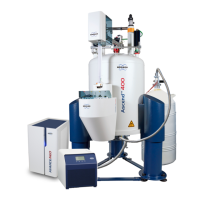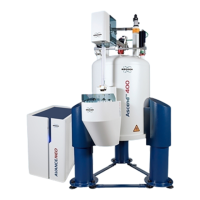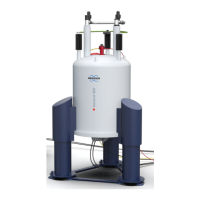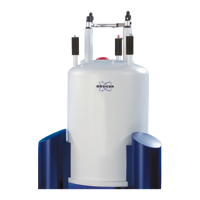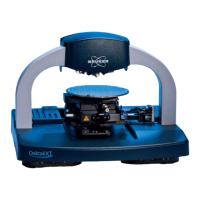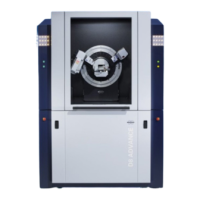Utility Requirements
70 H157655_1_008
Figure8.2: Emergency Quench Pipes
Pits
When a magnet is installed in a pit, it is important to ensure there is continuous air-flow
(exhaust) within the pit. This is done to prevent any buildup of nitrogen gas in the confines of
the pit. A low exhaust and an additional oxygen sensor down in the pit are recommended.
Additional emergency ventilation may also be necessary and the oxygen sensor mounted in
the pit should trigger an increased rate of exhaust.
Exhaust for Ceiling Soffits
A soffit is a hole that has been cut in the ceiling to facilitate cryogen fills and/or the magnet
installation. Though it is not required to install ventilation in a soffit, it is important to
understand that the soffit will be the first area to fill up with helium gas during a quench or
during a helium fill. It is important to elicit extra caution in this case.
A passive louver or an exhaust duct with fan are practical solutions when soffits are used.
This will prolong the cycle of the magnet between rebuilds, by preventing helium gas build up
in the soffit during refills.
Air Conditioning as an Exhaust
It is recommended that the air conditioning system be adequate to dissipate the sudden gas
buildup during a quench. In addition the air conditioning must have a safety feature which
draws all the air out of the room and brings fresh air in during a quench, rather than just
recirculating the old air through the system. The air conditioning system could, for example,
be connected to an oxygen level sensor.
Please contact Bruker for further information on exhaust solutions.
